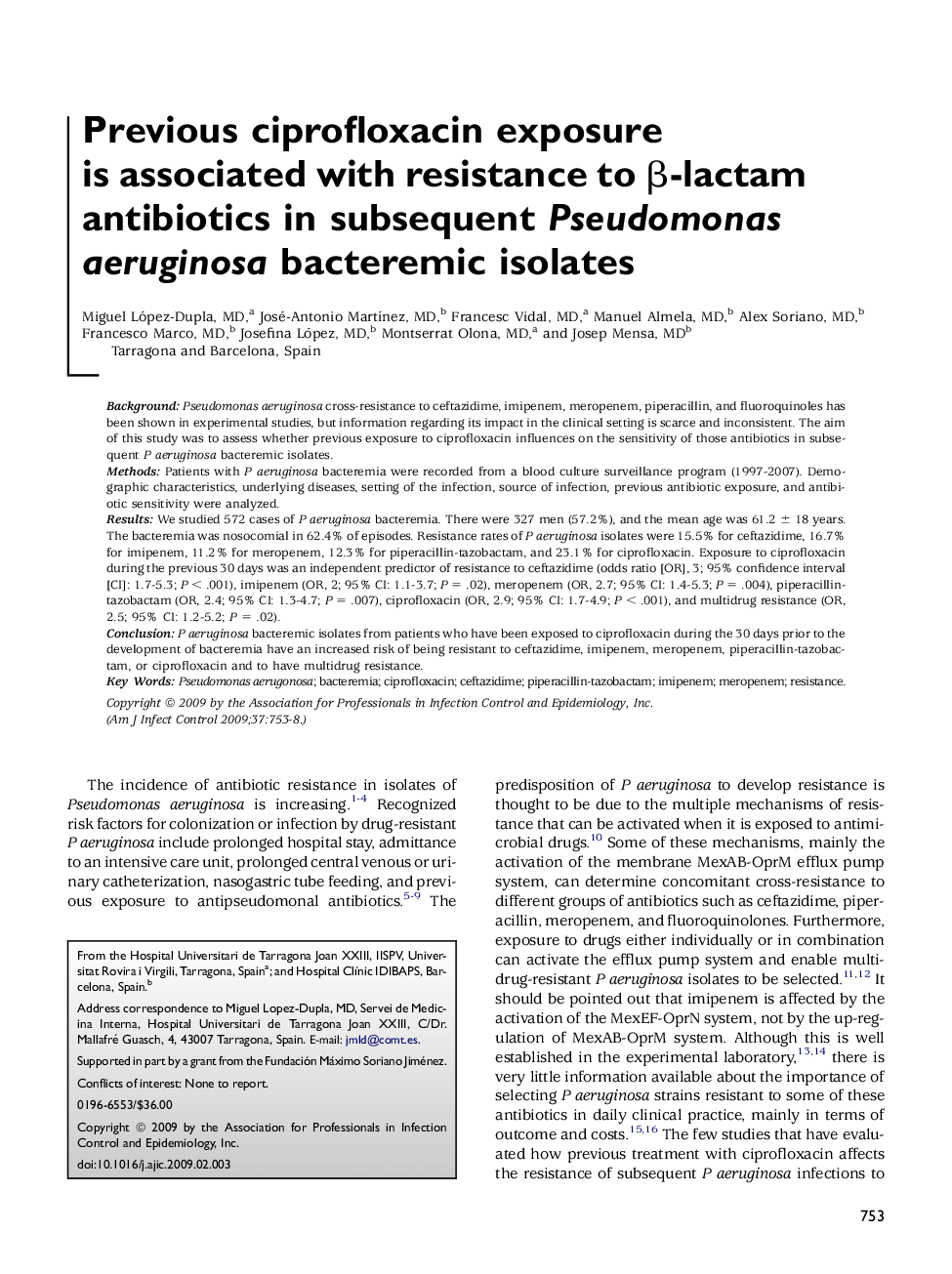| Article ID | Journal | Published Year | Pages | File Type |
|---|---|---|---|---|
| 2640497 | American Journal of Infection Control | 2009 | 6 Pages |
BackgroundPseudomonas aeruginosa cross-resistance to ceftazidime, imipenem, meropenem, piperacillin, and fluoroquinoles has been shown in experimental studies, but information regarding its impact in the clinical setting is scarce and inconsistent. The aim of this study was to assess whether previous exposure to ciprofloxacin influences on the sensitivity of those antibiotics in subsequent P aeruginosa bacteremic isolates.MethodsPatients with P aeruginosa bacteremia were recorded from a blood culture surveillance program (1997-2007). Demographic characteristics, underlying diseases, setting of the infection, source of infection, previous antibiotic exposure, and antibiotic sensitivity were analyzed.ResultsWe studied 572 cases of P aeruginosa bacteremia. There were 327 men (57.2%), and the mean age was 61.2 ± 18 years. The bacteremia was nosocomial in 62.4% of episodes. Resistance rates of P aeruginosa isolates were 15.5% for ceftazidime, 16.7% for imipenem, 11.2% for meropenem, 12.3% for piperacillin-tazobactam, and 23.1% for ciprofloxacin. Exposure to ciprofloxacin during the previous 30 days was an independent predictor of resistance to ceftazidime (odds ratio [OR], 3; 95% confidence interval [CI]: 1.7-5.3; P < .001), imipenem (OR, 2; 95% CI: 1.1-3.7; P = .02), meropenem (OR, 2.7; 95% CI: 1.4-5.3; P = .004), piperacillin-tazobactam (OR, 2.4; 95% CI: 1.3-4.7; P = .007), ciprofloxacin (OR, 2.9; 95% CI: 1.7-4.9; P < .001), and multidrug resistance (OR, 2.5; 95% CI: 1.2-5.2; P = .02).ConclusionP aeruginosa bacteremic isolates from patients who have been exposed to ciprofloxacin during the 30 days prior to the development of bacteremia have an increased risk of being resistant to ceftazidime, imipenem, meropenem, piperacillin-tazobactam, or ciprofloxacin and to have multidrug resistance.
